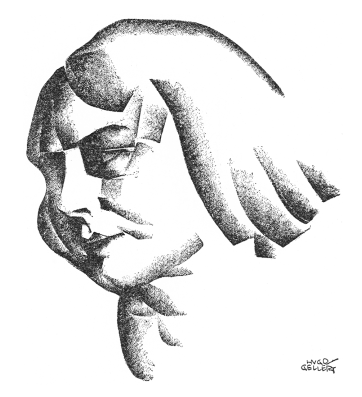It’s 1927 and the New Yorker is almost two years old. After a shaky start the magazine found its voice (and a lot of advertising revenue) and moved forward with a solid stable of contributors that would give the magazine a style that persists to this day.

Before I dive in, let’s get a snapshot of the country in 1927, courtesy of Bill Bryson’s terrific book, One Summer: America, 1927.
Bryson describes America as “staggeringly well-off in 1927,” with homes (especially in urban areas) shining with sleek appliances—refrigerators, radios, telephones, electric fans and razors—“that would not become standard in other countries for a generation or more.”
He writes that “of the nation’s 26.8 million households, 11 million had a phonograph, 10 million had a car, 17.5 million had a phone…42 percent of all that was produced in the world was produced in the United States.” Bryson also notes that in 1927 the U.S. made 80 percent of the world’s movies and 85 percent of the world’s cars, and that the state of Kansas alone had more cars than France.
It was also the year Babe Ruth would hit a record 60 home runs, and Charles Lindbergh would fly the Spirit of St. Louis across the Atlantic.
* * *
The Jan. 1 issue featured a profile of world-famous dancer Isadora Duncan, who was living in sad decline in Paris. Particularly acclaimed in Europe for her free dance style, the California-born Duncan also gained notoriety (mostly in puritanical America) for her flouting of traditional mores and morality. Today, she is mostly known for the freak accident that killed her. More on that below.

The profile, written by Paris correspondent Janet Flanner under the pen name “Hippolyta,” noted that Duncan was “the last of the trilogy of great female personalities our century produced. Two of them, [Eleanora] Duse and [Sarah] Bernhardt, have gone to their elaborate national tombs. Only Isadora Duncan, the youngest, the American, remains wandering the European earth.”

Little did Flanner know that Duncan would also be dead before the year was over. Here is how the Wikipedia entry on Duncan describes her death:
On the night of September 14, 1927 in Nice, France, Duncan was a passenger in an Amilcar automobile owned by Benoît Falchetto, a French-Italian mechanic. She wore a long, flowing, hand-painted silk scarf, a gift from her friend Mary Desti, the mother of American film director Preston Sturges. Desti, who saw Duncan off, had asked Duncan to wear a cape in the open-air vehicle because of the cold weather, but Duncan would only agree to wear the scarf.
As they departed, Duncan reportedly said to Desti and some companions, “Adieu, mes amis. Je vais à la gloire!” (“Farewell, my friends. I go to glory!”); but according to American novelist Glenway Wescott, Desti later told him that Duncan’s actual last words were, “Je vais à l’amour” (“I am off to love”). Desti considered this embarrassing, as it suggested that she and Falchetto were going to her hotel for a tryst.
Her silk scarf, draped around her neck, became entangled around the open-spoked wheels and rear axle, hurling her from the open car and breaking her neck. Desti said she called out to warn Duncan about the shawl almost immediately after the car left.

Referring to Duncan’s demise, the writer Gertrude Stein remarked: “Affectations can be dangerous.”
Next Time: Those Jaunty Jalopies…


Like this, very interesting read.
LikeLike